“The middle way” defines it well DJI Air 3.
Indeed, to tell the truth it defines all the drones of the Air series, because after all they were created for this: positioning itself halfway between the very compact Minis and the super Mavics.
This means that on the one hand we have a series of elements that are widely taken up by the brothers, on the other that they manage to combine price and features in an excellent way, placing a complete, agile and well-bodied product in the hands of the pilots.
However, you must start from an important assumption: appearances can be deceiving.
DJI Air 2S, its predecessor, had a 1-inch sensor with a fixed aperture.
The Mavic 2 Pro featured a similar sensor but with variable aperture.
The Air 3 has a 1/1.3 inch sensor with a fixed aperturelike the Mini 4 Pro.
The seemingly logical conclusion is that a step backwards has been taken. Or even that it is not a true middle ground, but a product that tends dangerously downwards, to the point of merging with the Mini family.
But no.
First of all why there are two objectives. Always 1/1.3″ but with different focal lengths: we have a 24mm F/1.7 – and this is the same as the Minis – and a 70mm F/2.8.
The other thing to consider is that DJI has done some re-engineering work that allows the sensor to capture even more light than the Air 2S.
In short, it’s not what it seems.
However, this is only one of the aspects that it goes to justify the price of DJI Air 3: €1,099.
Or rather, we start from this figure because there are multiple versions. In particular:
- DJI Air 3 with the DJI RC-N2 remote control for €1,099;
- DJI Air 3 Fly More Combo con DJI RC-N2 a 1.359 €;
- DJI Air 3 Fly More Combo con DJI RC 2 a 1.599 €.
We have worked on this latest version, which therefore includes a radio control equipped with a 5.5-inch 1080p display and a brightness of 700 nits.
The package also includes 3 flight batteries, a charging station and a shoulder bag that contains everything and which greatly facilitates transport.
DJI Air 3 review: how is it made?
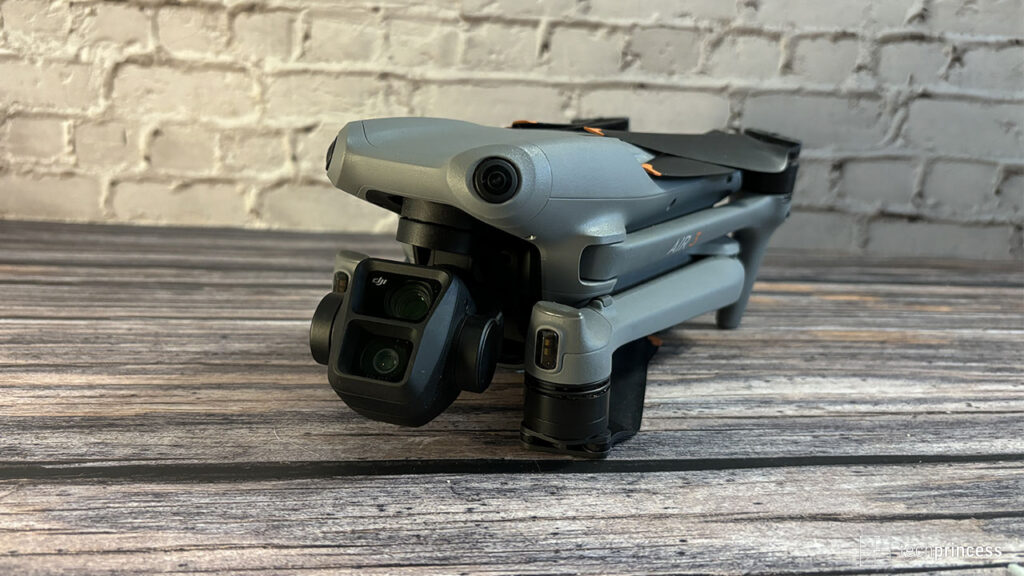
The design screams “DJI” from any angle: gray body, folding system of the arms designed to keep two above and two below with the propellers almost attached to the rest of the body, the classic gimbal for stabilizing the two objectives and the sensor events on the lower part.
It is an overall compact product and not too heavy considering that we stop at 720 grams against the 958 of the Mavic 3 Pro. However, we are far from the 249 grams of the Mini and this only means one thing: the A1-A3 certificate is mandatory.
The larger dimensions compared to its little brother naturally mean a larger battery: DJI claims 46 minutes. However, keep in mind that it is a symbolic value. Or rather, a number that you can reach in particularly favorable conditions but you must always consider the wind, the speed, the quality with which you are recording… all elements that make you lower around 30-35 actual minutes.
If you then opt for the Fly More Combo you get to an hour and a half flight without too much difficulty.
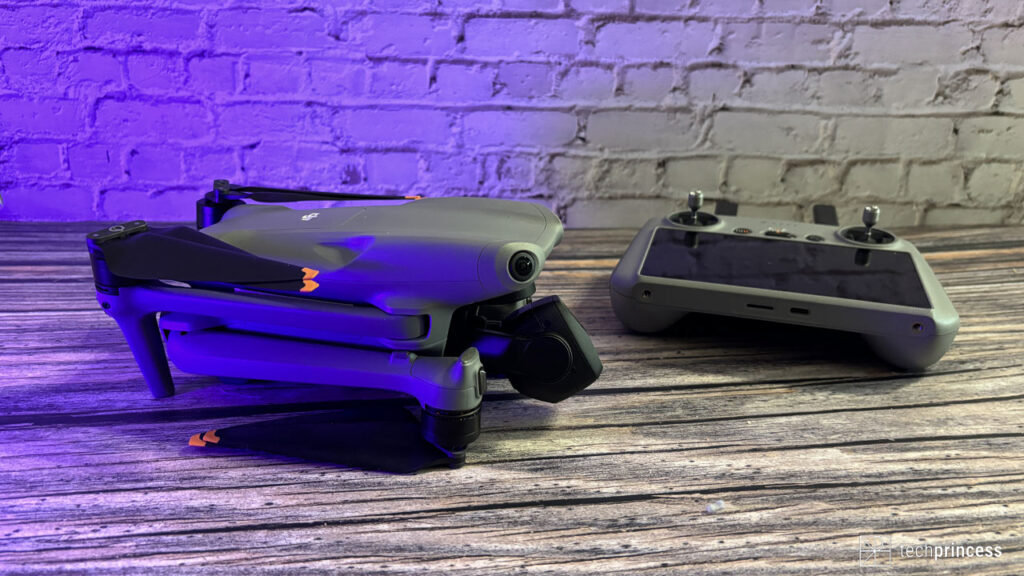
Accompanying our DJI Air 3 was the DJI RC 2. What are the advantages of this remote control with built-in display compared to others?
In the field it is a pleasure to use: it is comfortable, does not overheat, has good brightness even under the sun, it is very responsive and features a new processor which, together with the operating system based on Android 11, makes use fluid and intuitive.
If you’re thinking “well, I’m using my old controller”, we have to disappoint you: you can’t do that.
The previous series, therefore DJI RC and DJI RCN1, are not compatible since the transmission protocol has changed, now we have the O4.
The maximum transmission distance is 20 km without interference, although we remind you that you should maintain visual contact with the drone.
How does it fly?
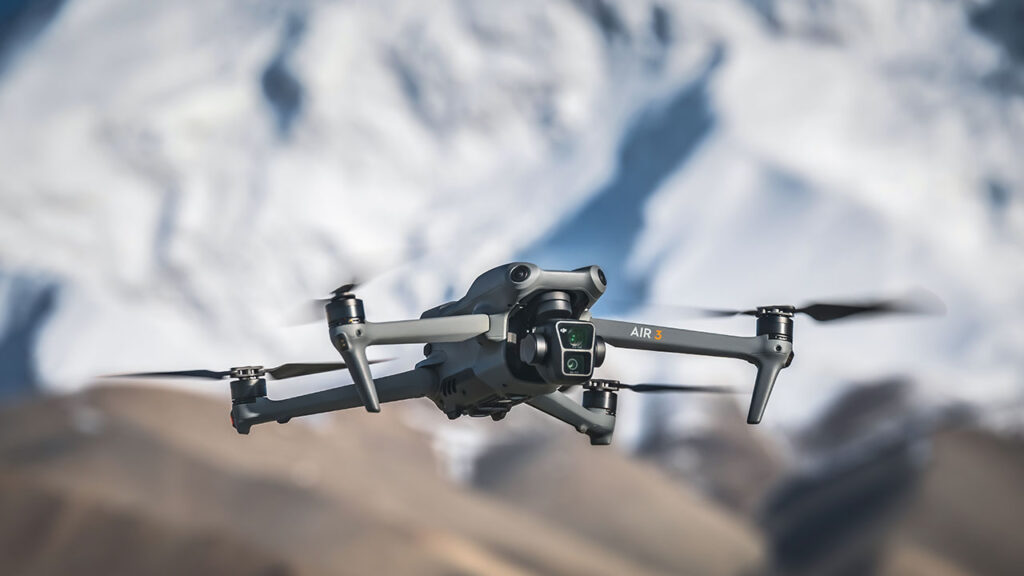
DJI Air 3 translates 3 flight modes: Cine, Normal and Sport.
What changes? Cine was created to bring home smooth shots so it reduces the sensitivity of the controls while Sport turns off obstacle detection to allow you more advanced (and dangerous if you’re not familiar with) stunts.
Have you never put your hand on a drone? Don’t panic.
First of all this model is meant to be simple to use, even for beginners. Secondly it’s full of sensors everywhereis equipped with GPS and integrates the aforementioned obstacle detection and avoidance system. Let’s be clear, this doesn’t mean that it does everything by itself, you will still have to be very careful, but technology will give you a hand.
You also have all the software features that DJI has accustomed us to: from Homecomingclassic or advanced, at theActive Track to track a subject, passing through navigation a WayPoint with the possibility of quickly indicating POIs, Points of Interest.
All this helps you both in the flight and in the recovery phase.
Which brings us to another question…
What are the videos and photos like?
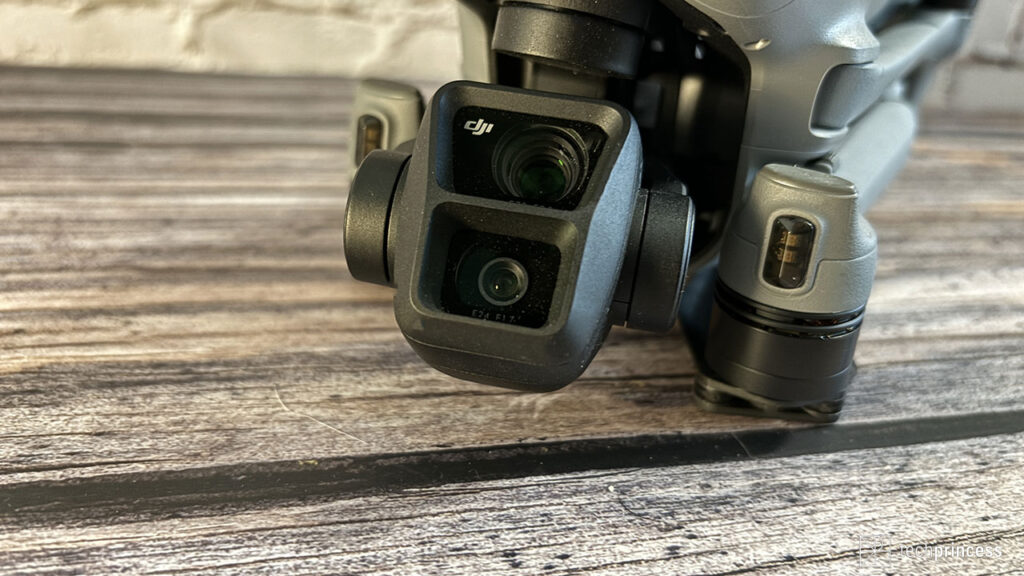
DJI does not disappoint and allows you to take home both high-quality photos and videos.
The telephoto lens is an extra gear. We know, it may not seem very useful on a drone but it isn’t. Once you get used to it, you will hardly be able to do it by hand because it manages to give you a different point of view or the zoom you need, whilst maintaining the same quality as the main sensor and being able to take advantage of the same features.
Of course, the 24mm offers a few more details and performs better in low light conditions but overall you have perfect clips for every type of use. You can record in 4K horizontally and 2.7K vertically, with a crop on the main sensor why not, Air 3 can’t rotate its head to shoot directly vertically in 4K. An absolute evil? Not necessarily given that social media currently doesn’t support 4K but most of the content is in FullHD. However, it is not excluded that a future DJI Air 3S could give us vertical native 4K.
And the fps? They depend on the resolution. With 1080p you can also reach 200 fps.
Another element to consider is the new 10-bit D-Log M color profileintroduced with the Mini 4 Pro. You are therefore free to shoot your clips in LOG and then work on them in post-production, so you can standardize the footage with other cameras or give a particular mood to your clips.
The photographic front is also good, with the possibility of shoot in RAW (DNG) and JPG and RAW photos are rich in information and easily workable with dedicated software.
The DJI Air 3 review: conclusions
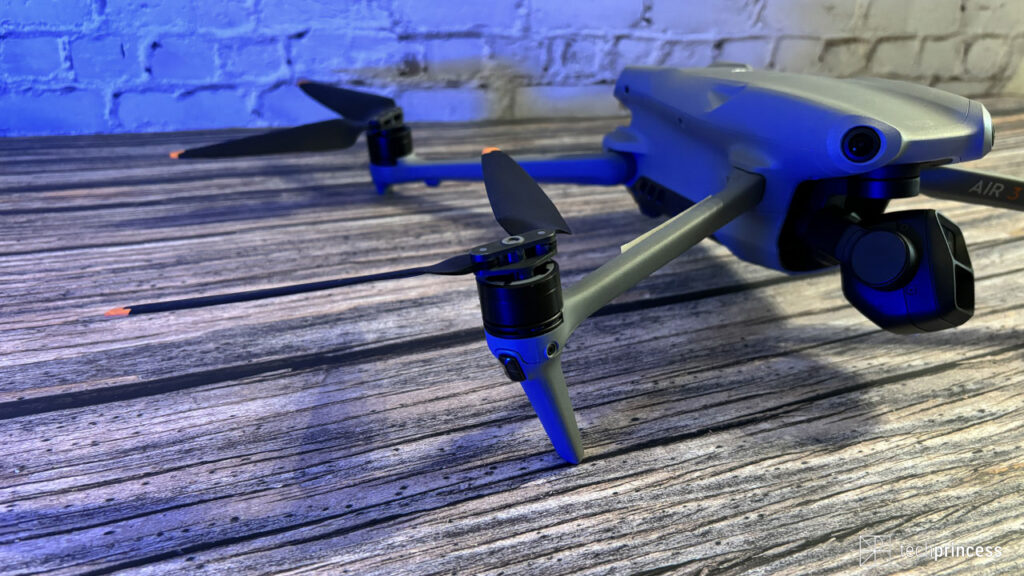
DJI AIr 3 is a drone dedicated to all those who want and can go beyond the Mini.
“They want” because they are attracted both by the hardware and software completeness and by the dual objective.
“They can” because naturally you need a license and the financial resources to make this purchase.
Overall however we found it an excellent product, larger and heavier than the Minis because it offers more without becoming complicated and difficult to master, even for beginners.






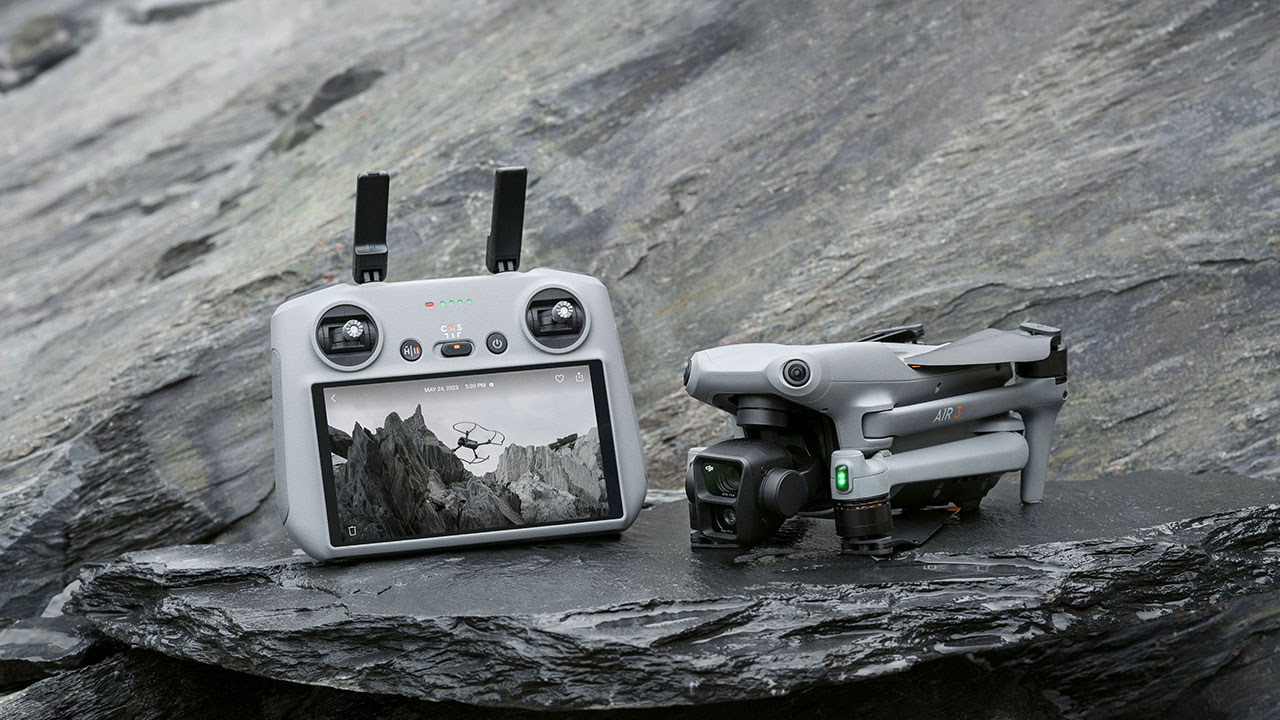








Leave a Reply
View Comments